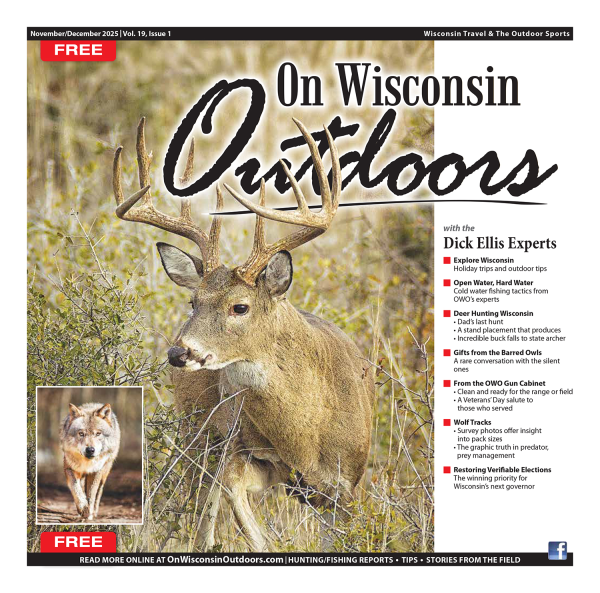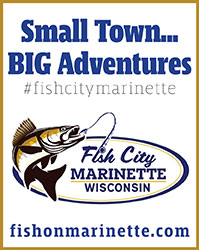Statewide birding report: Massive overnight migration boosts bird watching
If migration has been slow in your neck of the woods chances are that changed this Thursday morning as Wisconsin saw a massive migration of millions of birds overnight. Southern counties are now earnestly into the warbler migration, while Swainson's thrushes are especially common in many forested areas, small woodlots, and even some backyards, an occasional gray-cheeked thrush among them. Meanwhile, resident birds continue to depart, making orioles, grosbeaks, buntings, tanagers, flycatchers, and hummingbirds less common with each passing day, especially up north. Cedar waxwings are on the move statewide - look for decreasing numbers in the north and increasing numbers in the south over the week ahead. The south also saw some nice flights of common nighthawks this week, while only stragglers remain northward. Northern birders also noted unusually good numbers of migrating red-breasted nuthatches and purple finches this week. It will be interesting to see if this is a harbinger of anything to come. Also of note up north has been a slight decrease in warbler diversity, with increased numbers of palm and yellow-rumped warblers, as well as the first good push of sparrows like Lincoln's, swamp, white-throated, an early white-crowned, and a few dark-eyed juncos - yes, juncos! Other shorter-distance migrants are also moving now in the north, such as winter wren, blue-headed vireo, northern flickers, yellow-bellied sapsuckers and ruby-crowned kinglet. Look for more of all these species to increase toward mid-month. Some birders noted flocks of teal grouping up at area wetlands, and we should expect the first truly Canadian Canada geese to arrive any day now. Although a few buff-breasted sandpipers were nothing to scoff at, this week's rarity list is again topped by swallow-tailed kites. Two individuals were photographed together at the Marquette County site and another photographed along Lake Michigan in Ozaukee County, where hawk migration is picking up in general. Be sure to get out and enjoy this fabulous month for birdwatching, and as always, report your finds to www.ebird.org/wi. Good birding! - Ryan Brady, conservation biologist, Ashland

Warblers provide an identification challenge for even the most avid birders during the fall months, such as this immature Black-throated Green Warbler that lacks a black throat!Photo credit: Ryan Brady
________________________
Upcoming featured events at Wisconsin recreational properties
Friday, September 7, 2018
- Interstate State Park - Wisconsin State Symbols
- Lakeshore State Park -Kids Fishing Friday
- Tichigan Wildlife Area - Fall Bird Hike
Saturday, September 8, 2018
- Devil's Lake State Park - Monarch Tagging, Universe in the Park
- Interstate State Park - Canoe Lessons
- Kettle Moraine State Forest - Pike Lake Unit - Family Campfire & Sing-Along with Randy Peterson
- Kettle Moraine State Forest - Southern Unit - Microbiology
- Kohler Andrae State Park - Night Hike
- Lakeshore State Park - Weekend Wellness Walk, Nature Photos with a Naturalist
- Mirror Lake State Park - Bat Conservation of Wisconsin
- Newport State Park -Mushroom Hike with Charlotte Lukes, Poetry Trail Hike - Poems of the Moon and Dark Sky
- Rib Mountain State Park - Ecology of Rib Mountain
- Willow River State Park - Yoga in the Park!
- Wyalusing State Park - Starsplitters Astronomy Star Party
Sunday, September 9, 2018
- Interstate State Park - Pet-A-Pelt
- Mirror Lake State Park - Tour the Seth Peterson Cottage
- Newport State Park - Stargazing at the Dark Sky Park
For all events search Get Outdoors
________________________
Upcoming State Natural Area Workday
September 8, 9-noon Bluff Creek Workday: Collecting seed - Come enjoy the fall flowers and help volunteers at during our monthly Southern Kettle Moraine SNA workdays. Pick seeds, learn something, meet knowledgeable people, and enjoy the beauty of this rich remnant prairie/wetland in the process. We need this seed to plant areas of brush we've cleared and will clear in the winter. The seeds will be planted in the bare areas to encourage native grass and wildflower establishment. No skills needed you will be trained onsite.
Check the State Natural Areas Volunteer Program page of the DNR website for details. - Jared Urban, conservation biologist, Dane. - Jared Urban, conservation biologist, Dane











